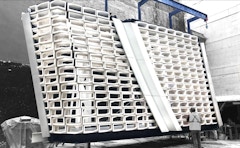
Evaluating Additive Manufacturing for Metallic Facade Components
The state-of-the-art of Additive Manufacturing (AM), popularly known as 3D printing, shows its prospective future in the

The state-of-the-art of Additive Manufacturing (AM), popularly known as 3D printing, shows its prospective future in the









With increasing interest in wellness and human-centric design in workplaces, the design of building enclosures is predicated on optimizing competing





Apertures is a six-story, commercial building in the Roma Norte neighborhood of Mexico City–a neighborhood severely impacted by the 1985 and 2017

This paper examines two profoundly different design approaches: one, herein called ‘autonomous’, where the building’s design is governed by internal



